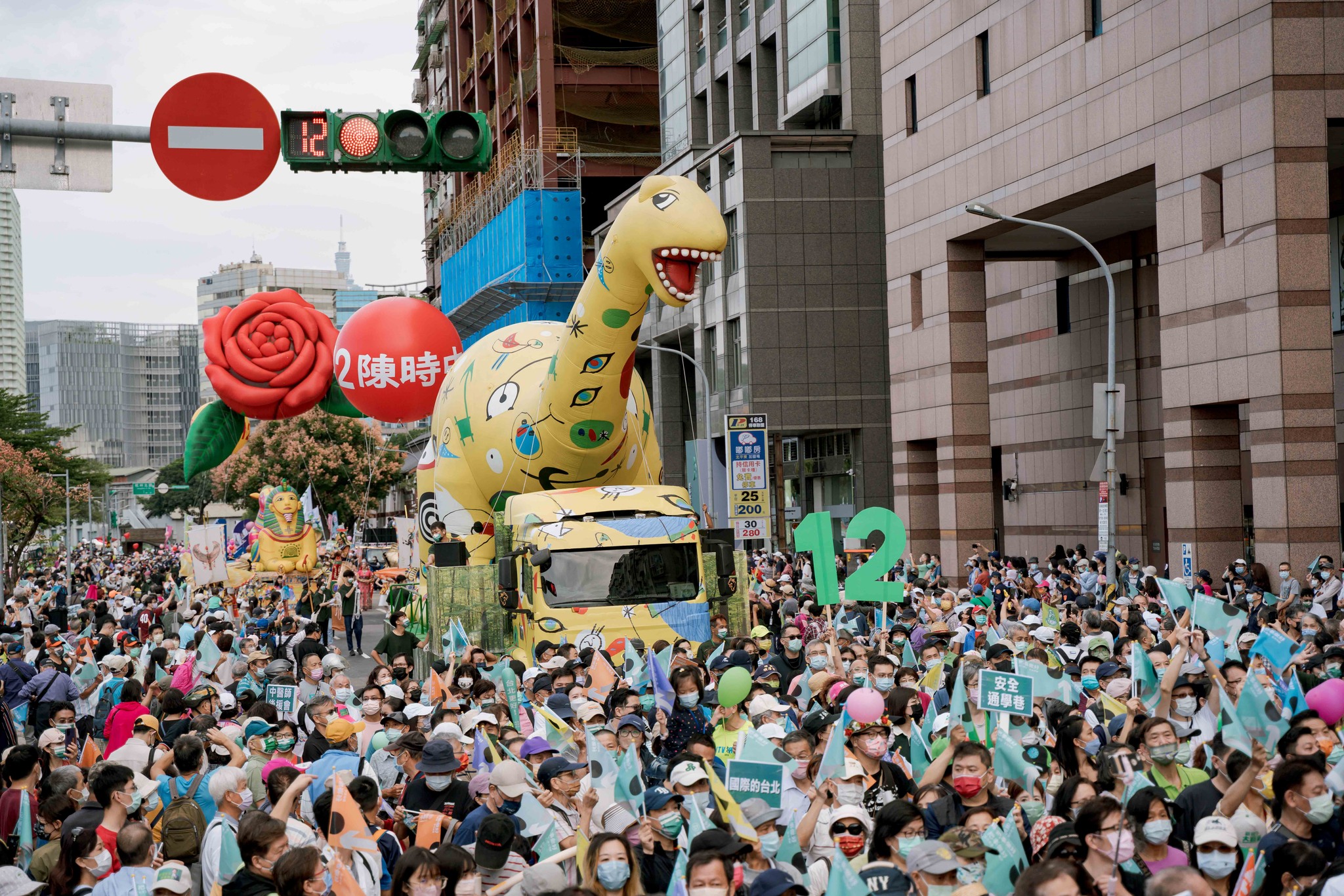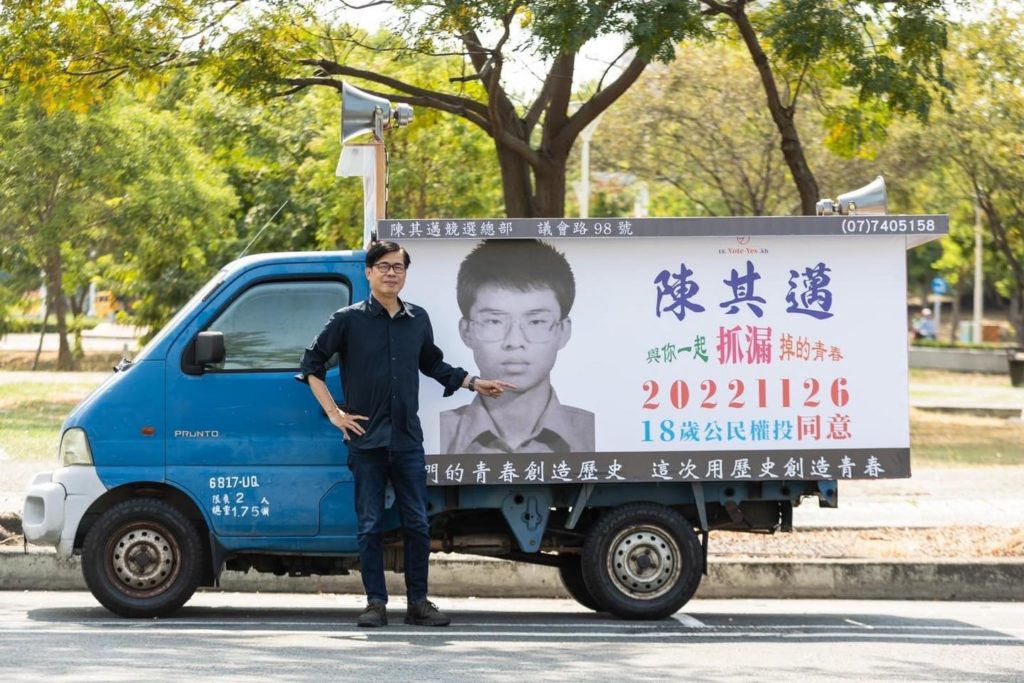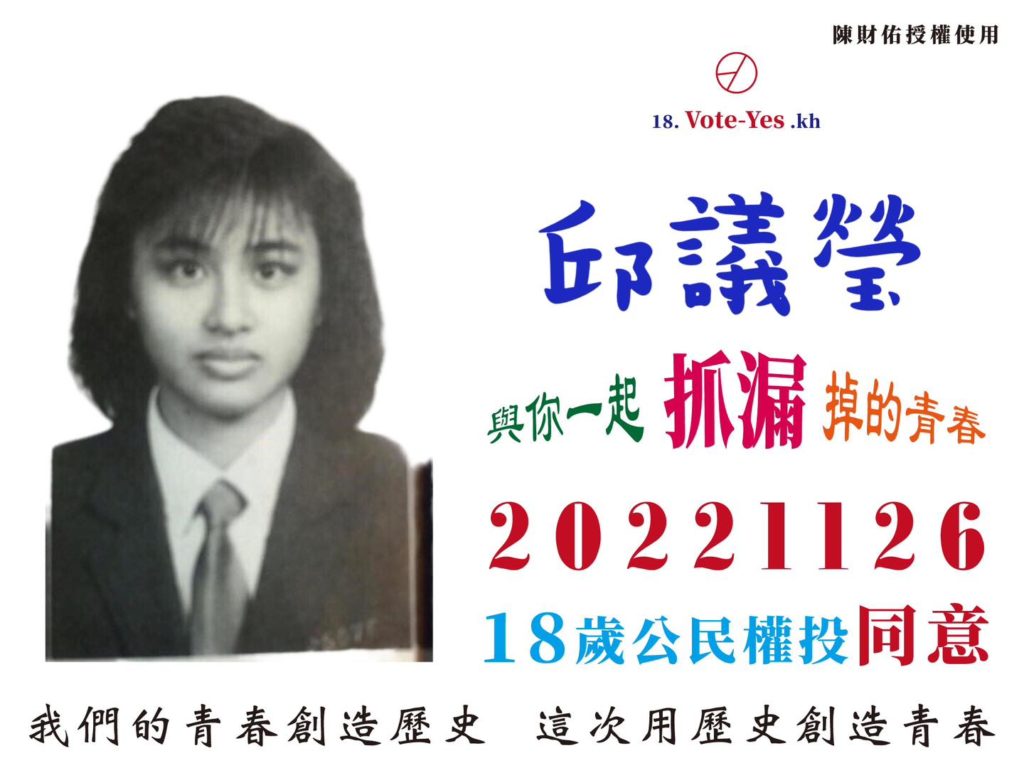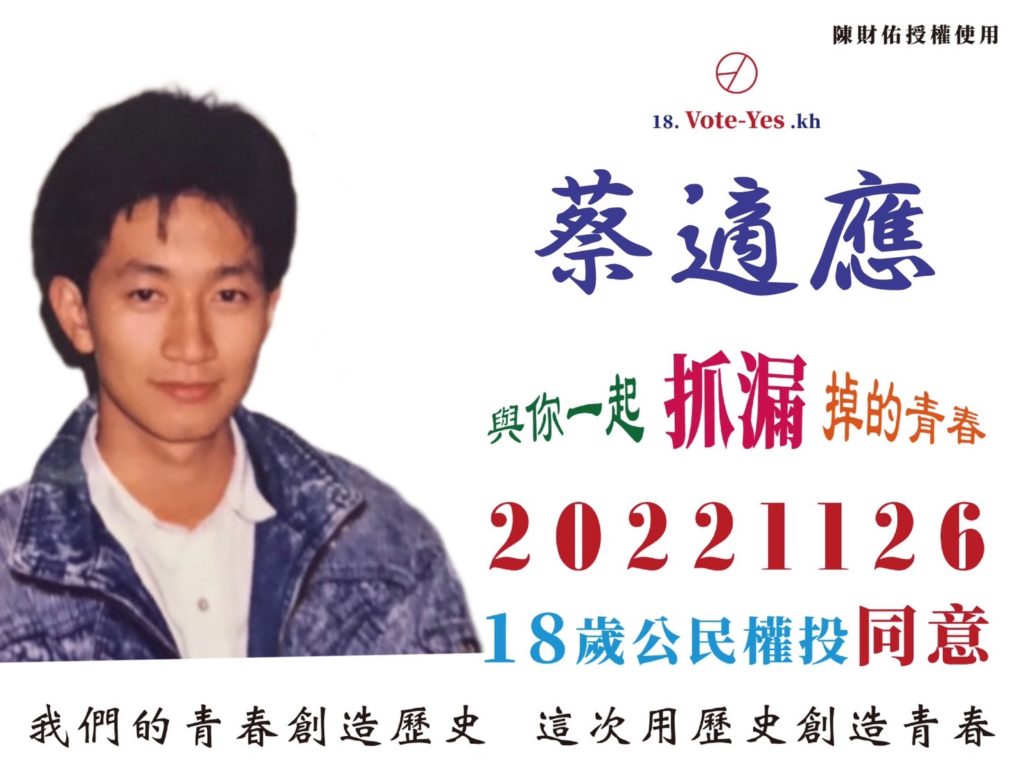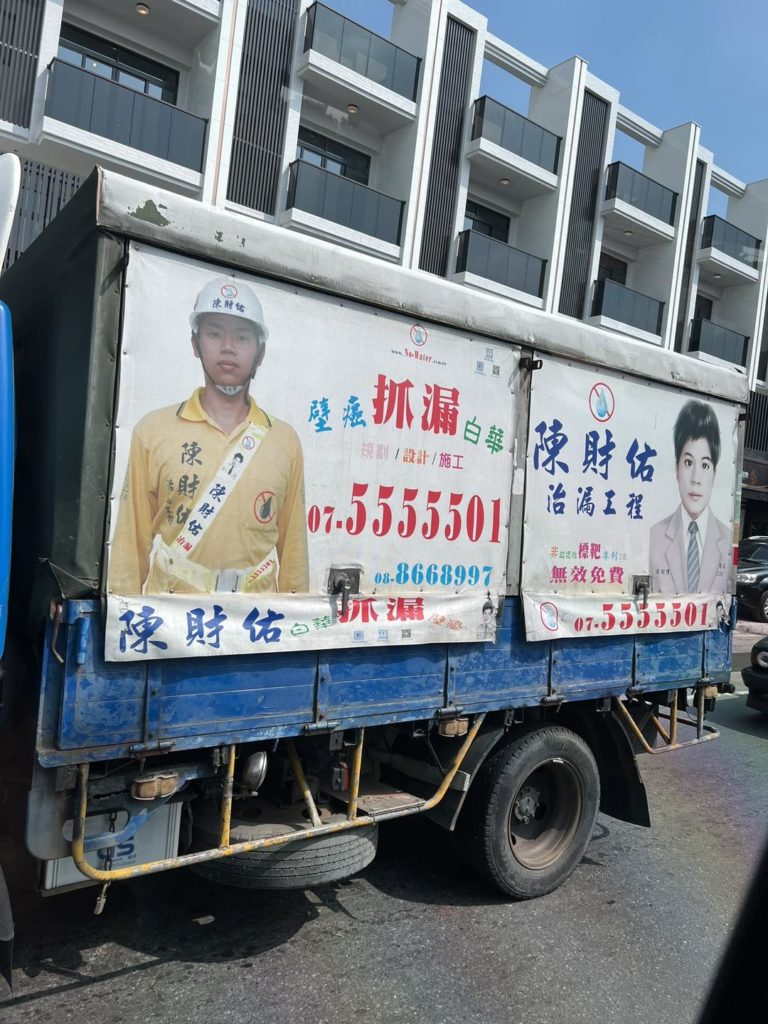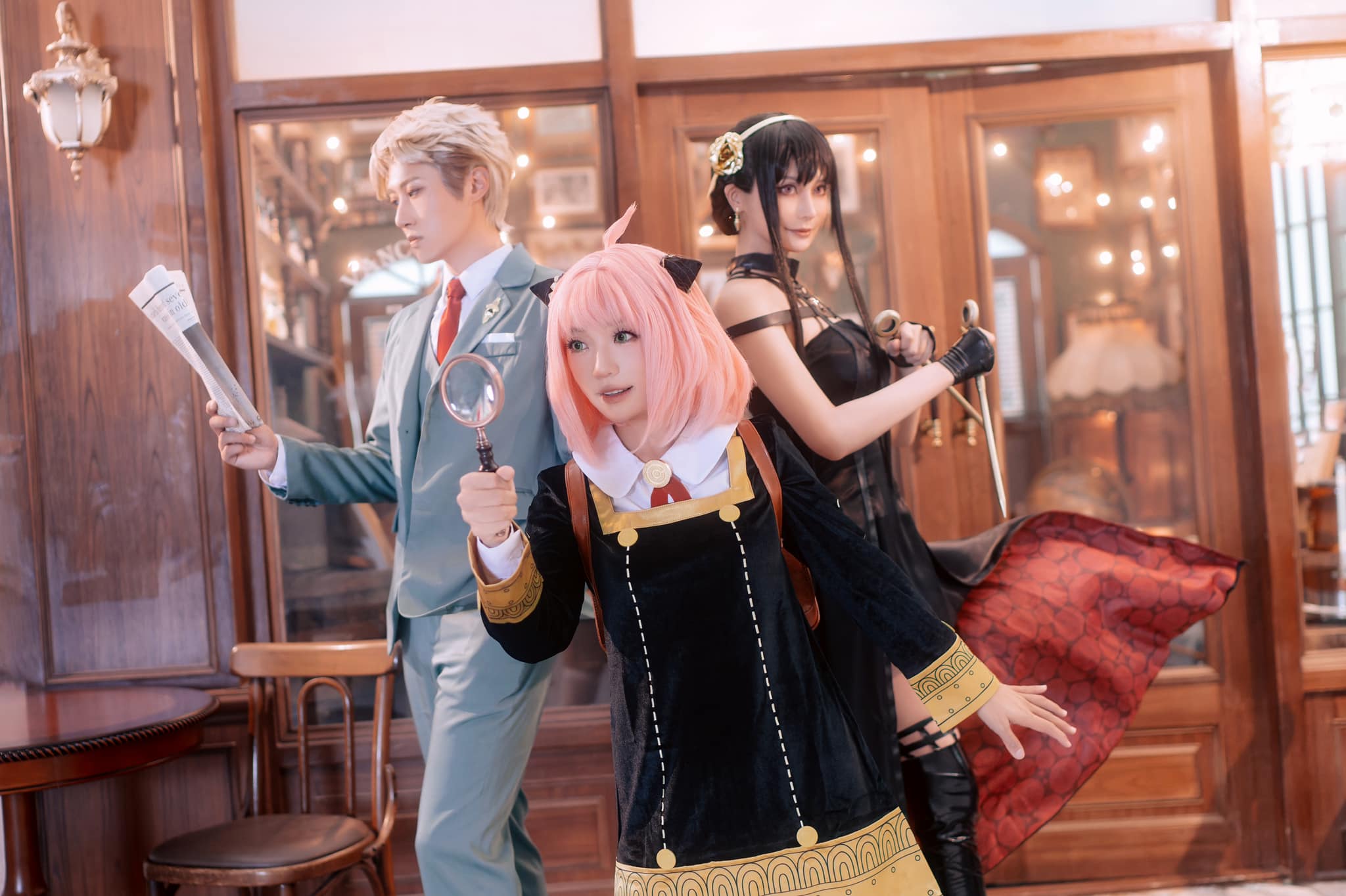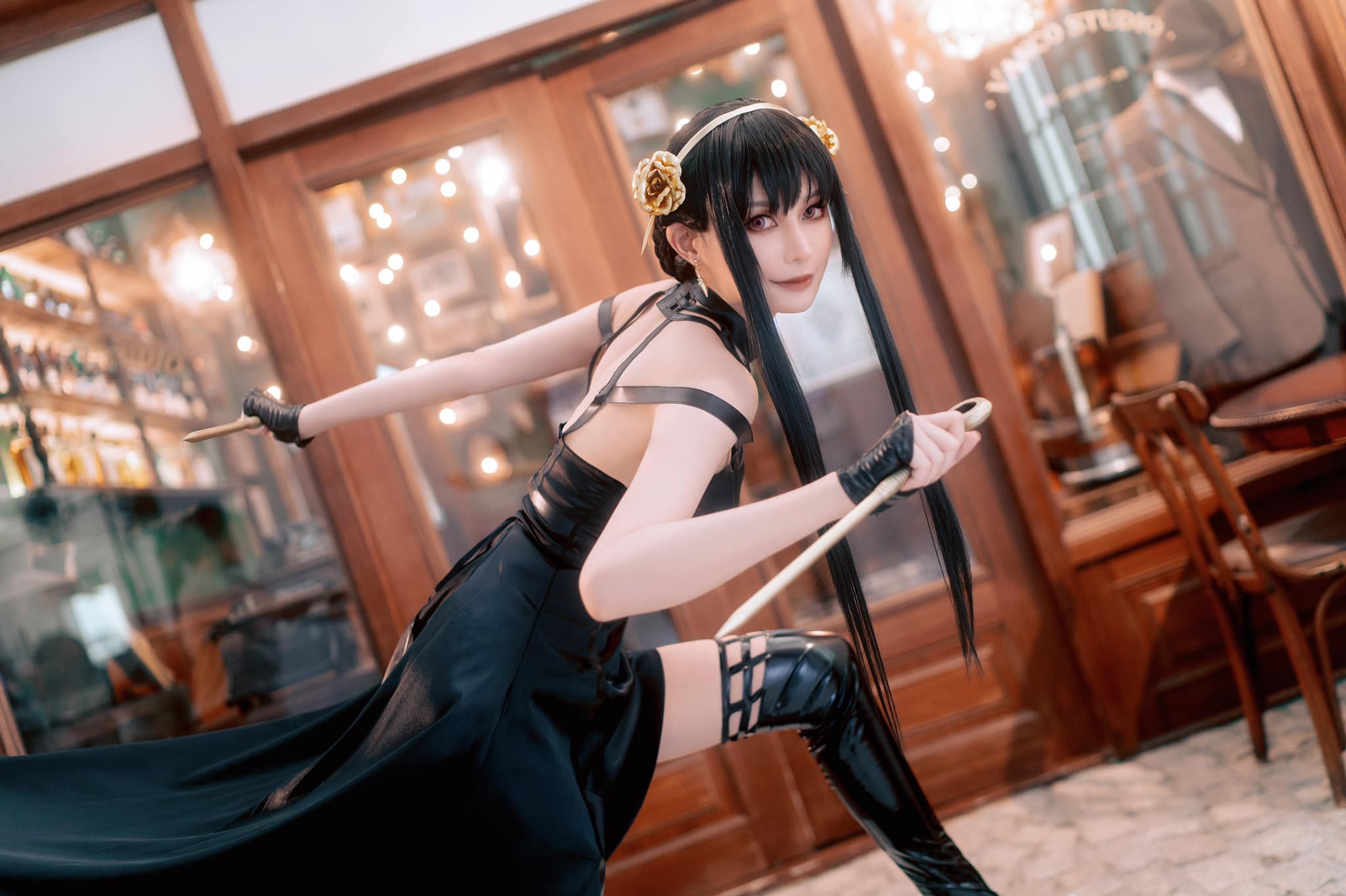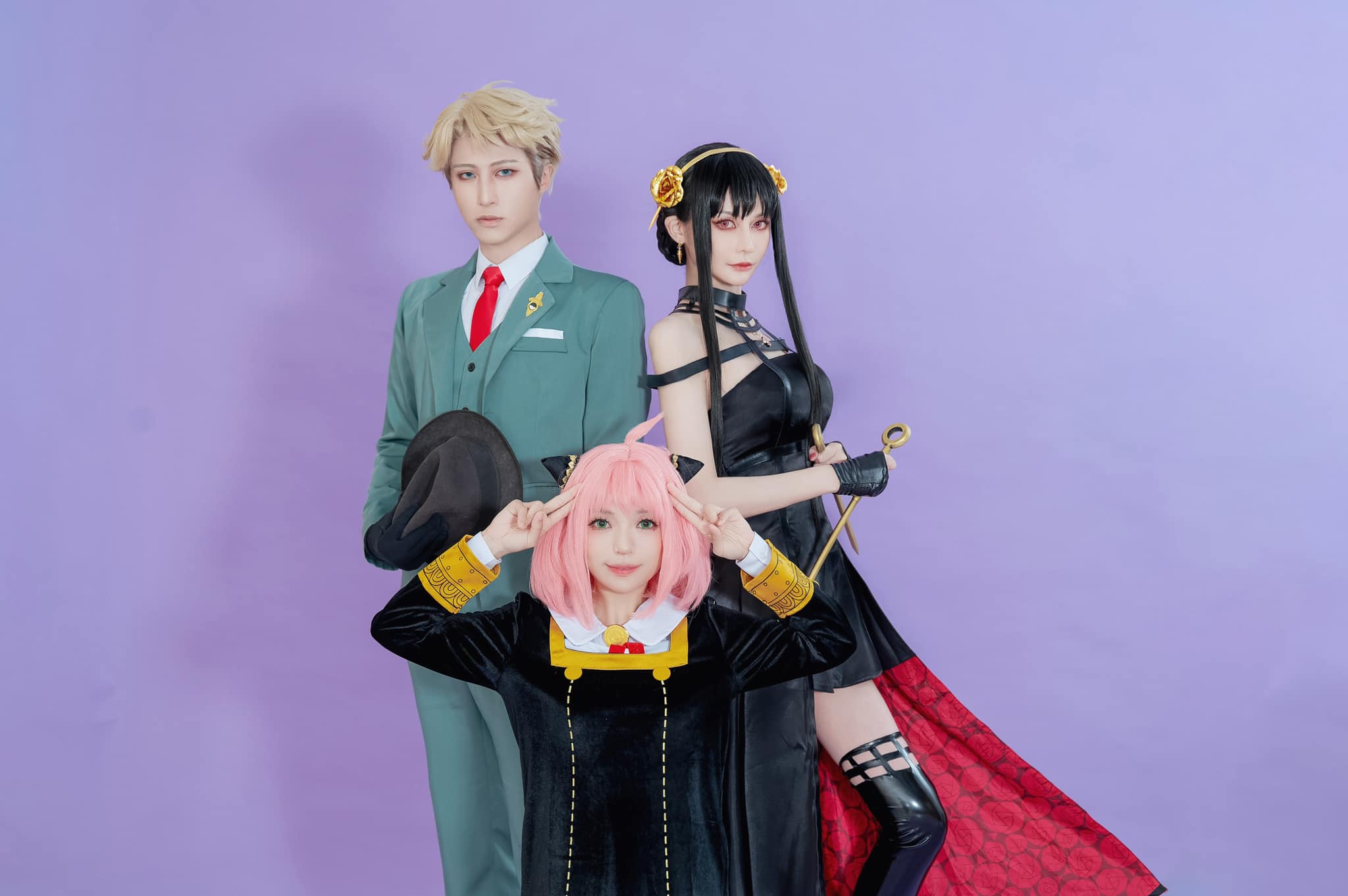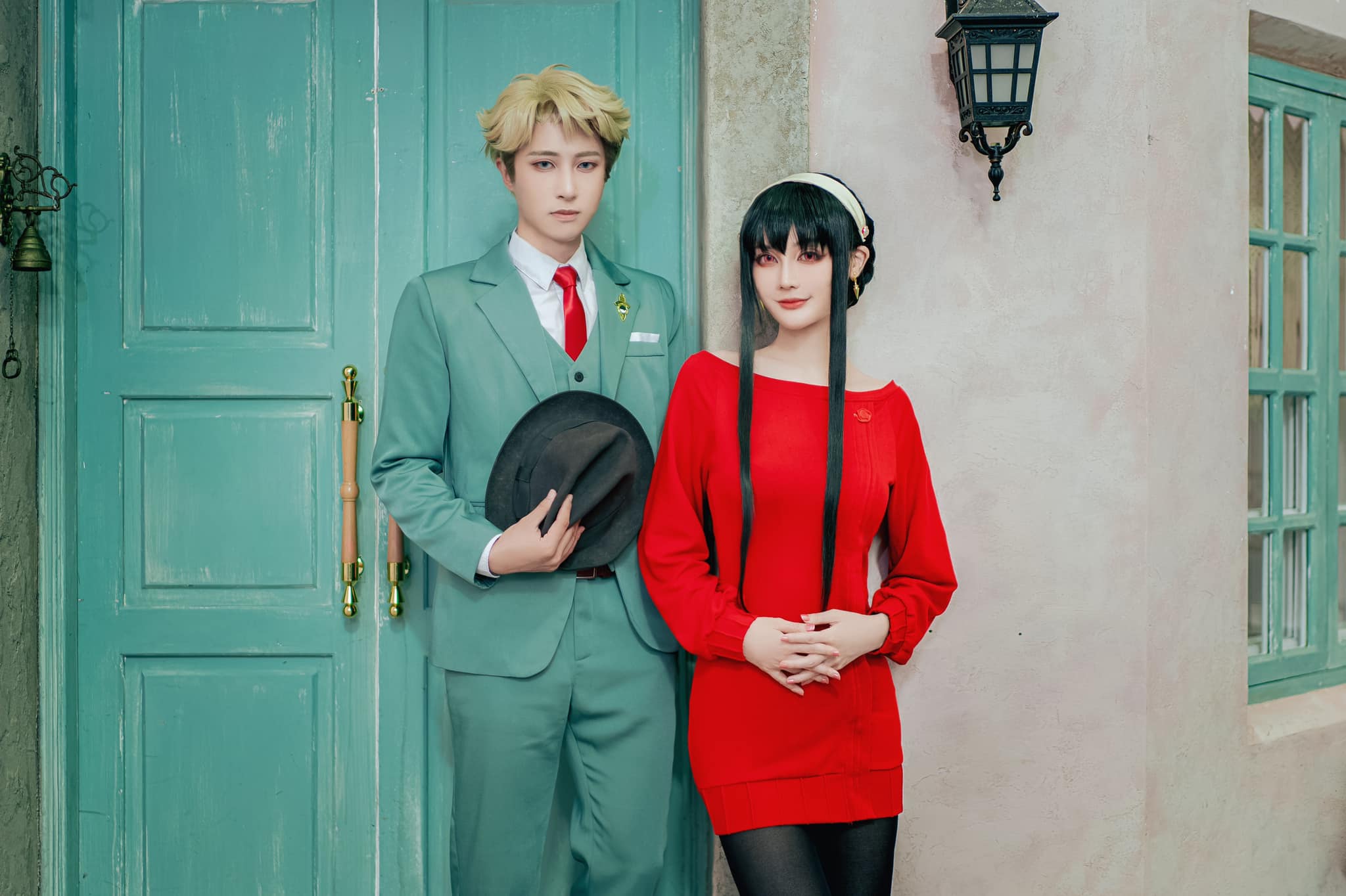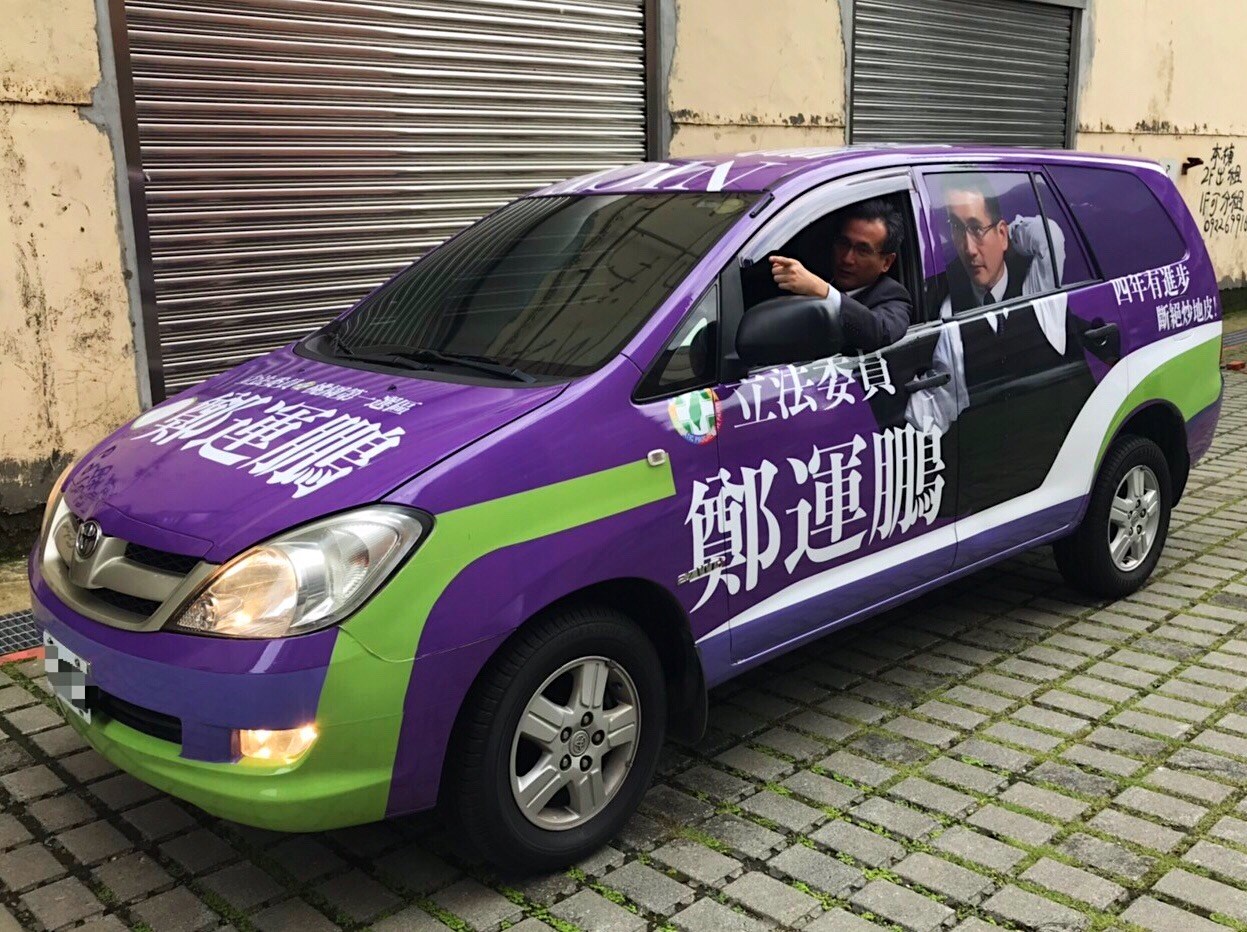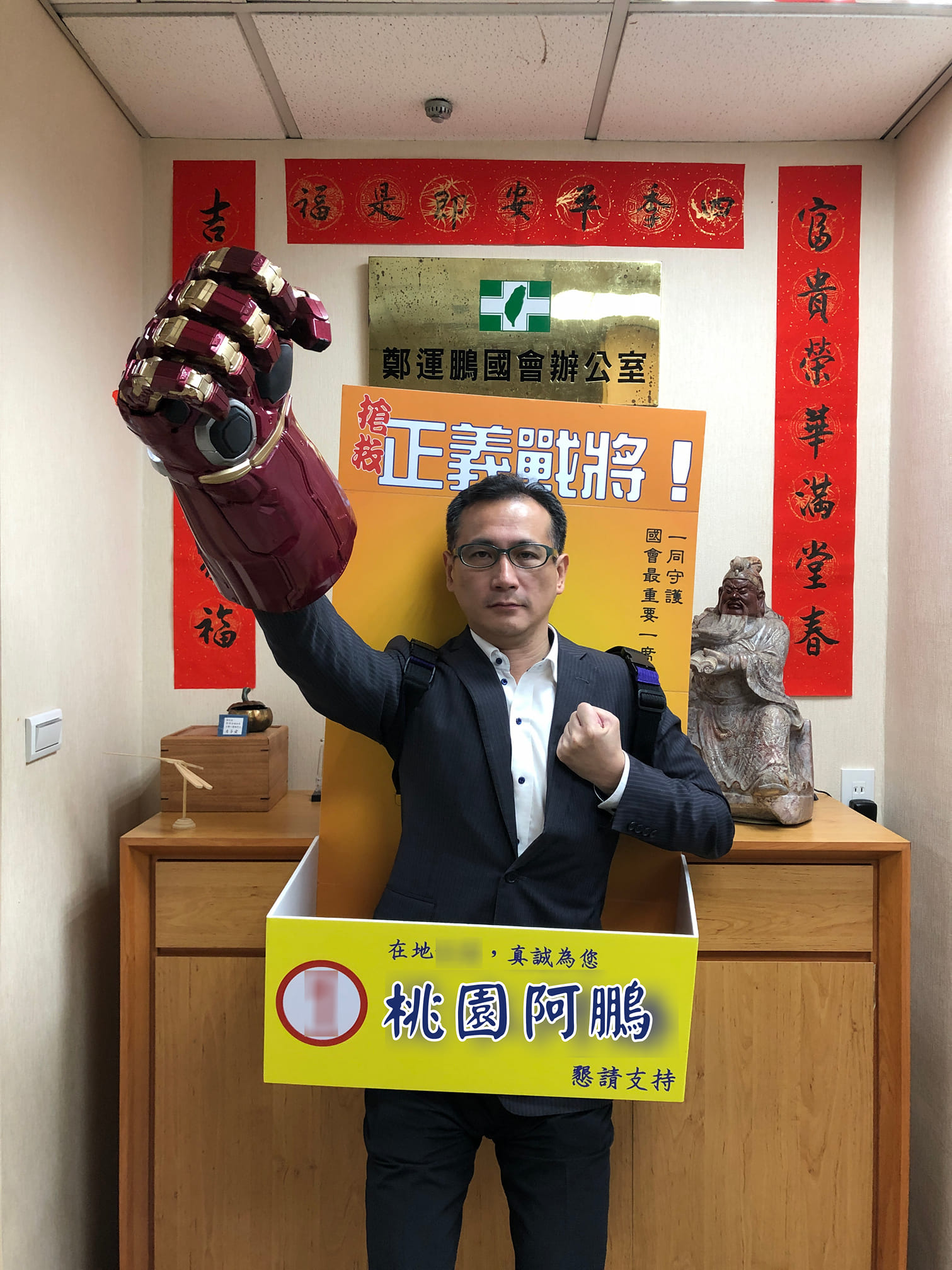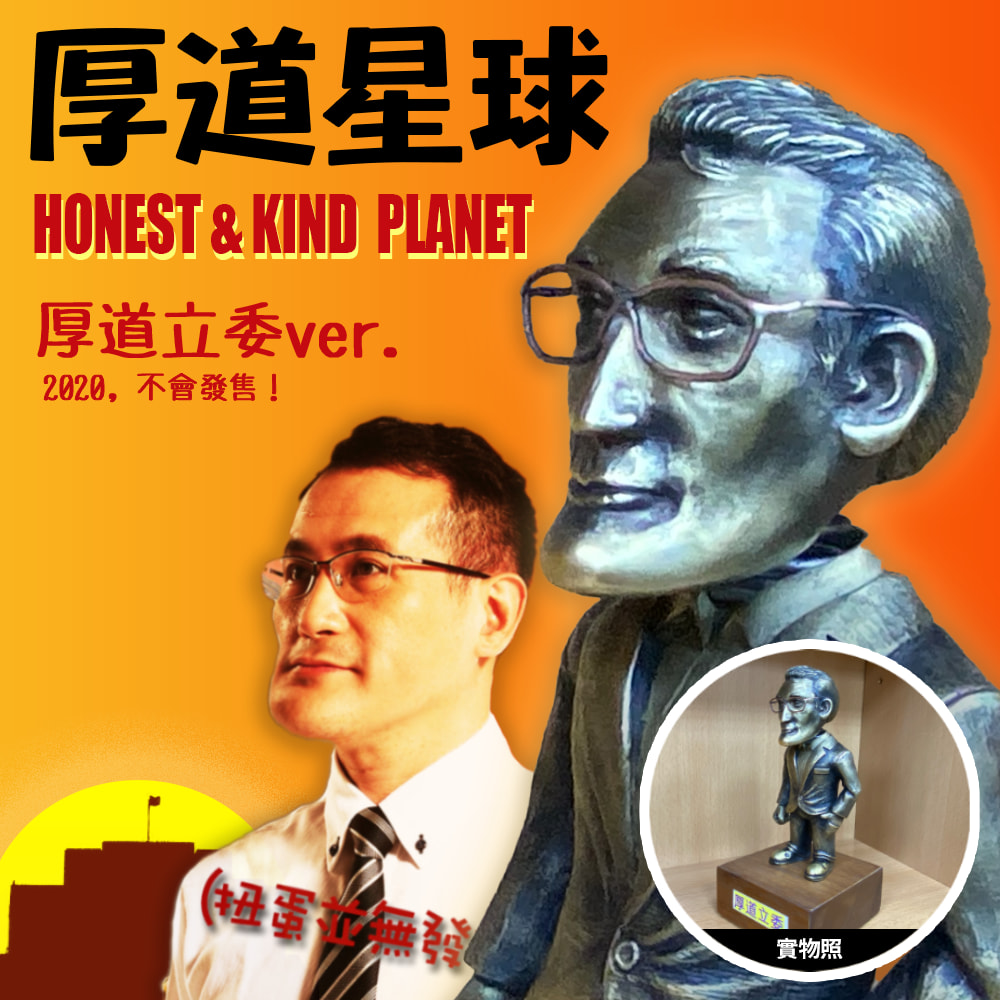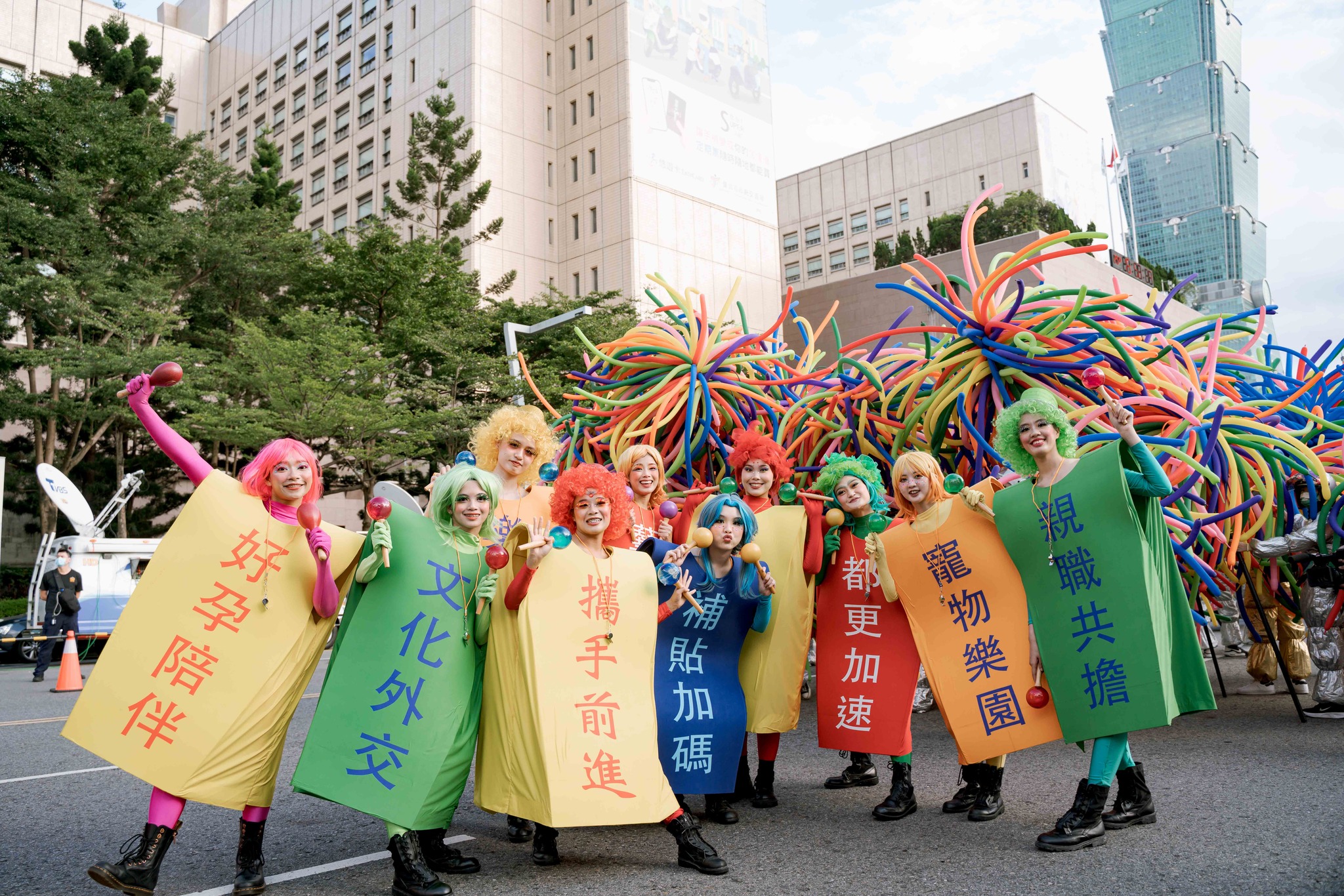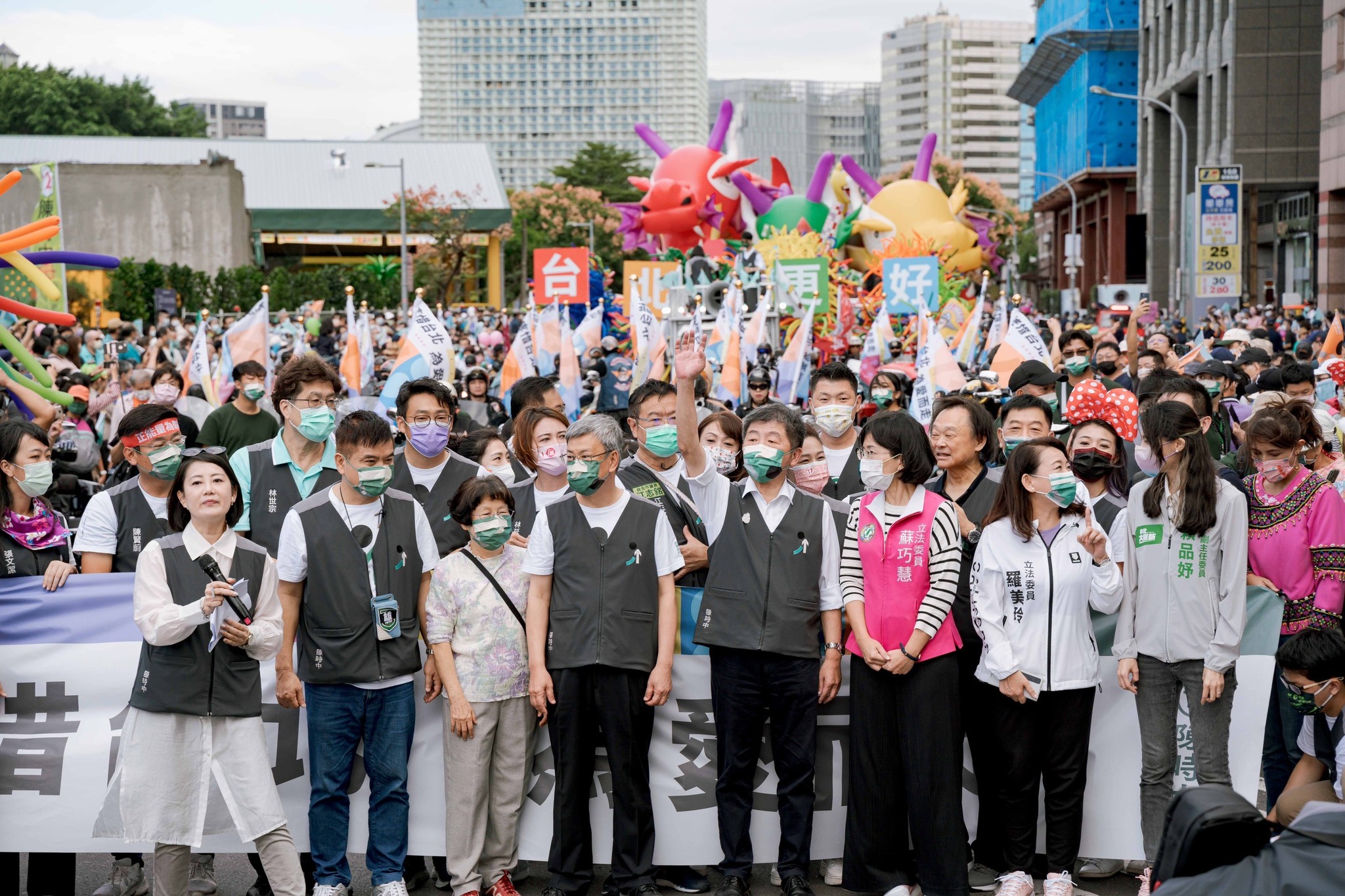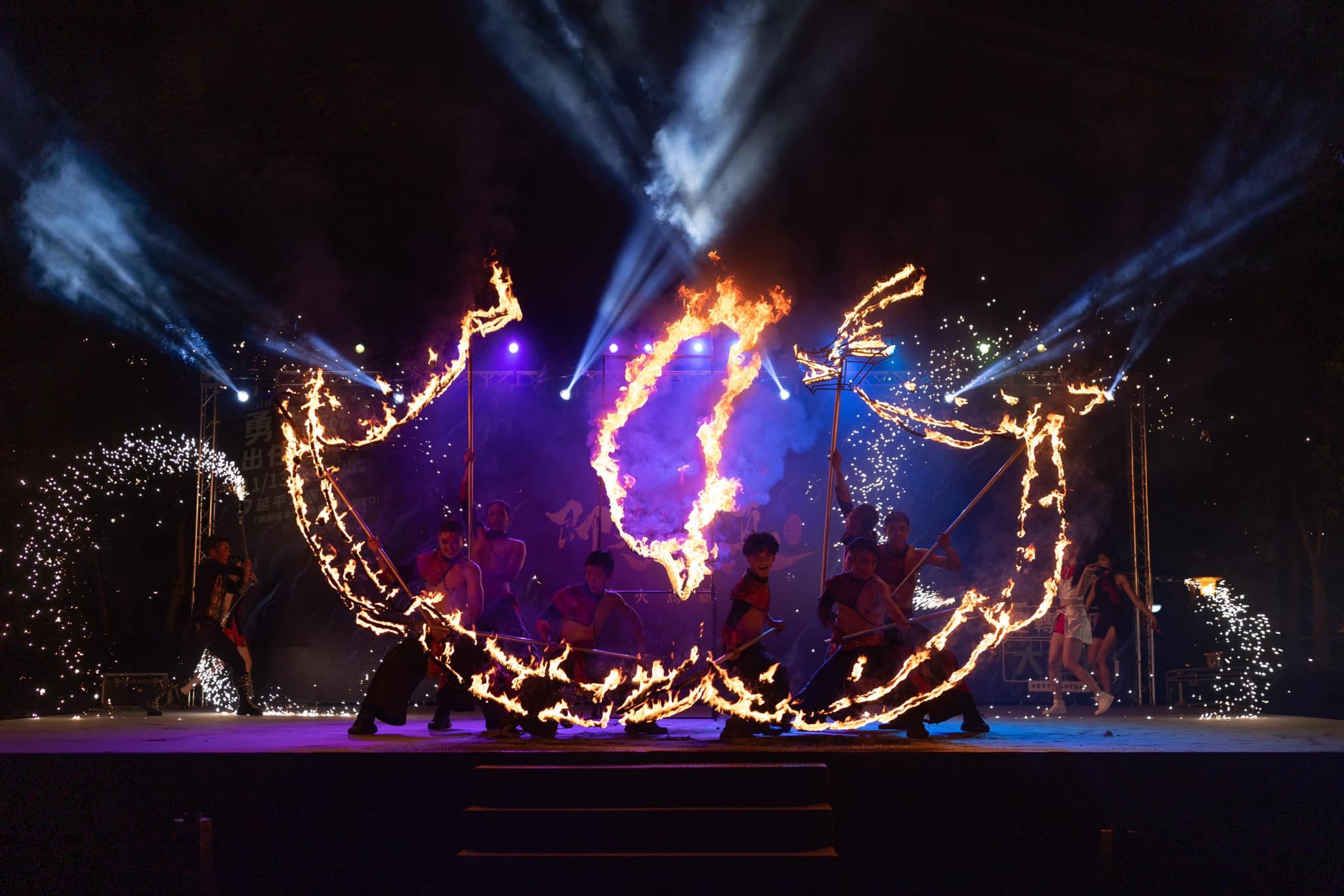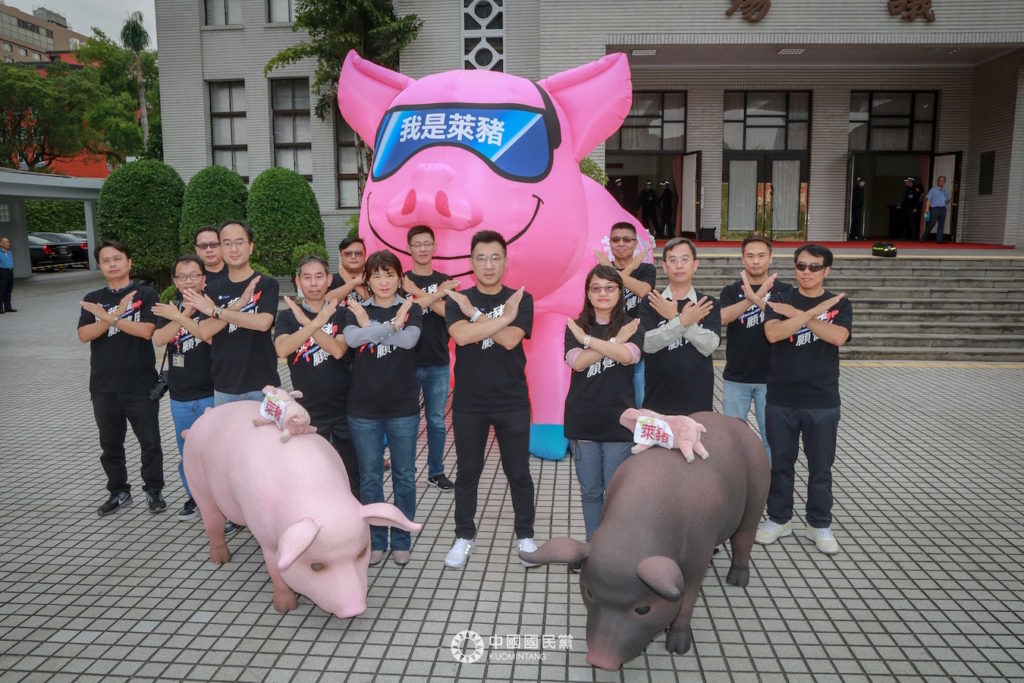by Brian Hioe
語言:
English
Photo Credit: 民主進步黨/Facebook
THIS YEAR’S ELECTION continued much of the same aesthetic tropes as previous elections. As with past years, it was the DPP that focused on aesthetics that could outreach to young people, and maintained the modernist aesthetic that has characterized pan-Green campaign advertising since the Tsai administration took power. While the KMT has significantly modernized its aesthetic in recent years, it is still the DPP that proved the more experimental in election advertising.
The referendum ad by Chen Chi-mai (upper-left), similar ads by legislator Chiu Yi-ying (upper-right) and DPP Taichung mayoral candidate Tsai Shih-ying, and the original plumbing ad by Chen Cai-you (bottom-right). Photo credit: 登真-邱議瑩/Facebook
One case in point was the advertising campaign for the referendum to lower the voting age to 18 from the current 20 years old run by the DPP. This began in Kaohsiung with an ad featuring a photo of mayor Chen Chi-mai when he was 18. The ad was done in the iconic style of plumber Chen Cai-you, whose distinctive advertisements featuring a photo of himself when young appear frequently on billboards in Taiwan. After Chen Chi-mai put up the ad, subsequently, other pan-Green politicians began posting billboards in the same style featuring photos of themselves while 18.
It proves interesting to note how the pan-Green camp has, in this way, leaned into the use of deliberately retro advertisements in order to show that today’s generation of senior politicians were once young. In past years, it has been more common for pan-Blue parties such as the MKT to lean into retro stylings to signal their throwback politics to supporters.
Lai Pin-yu cosplaying as Yor, Tseng Wen-hsueh as Loid, and Huang Jie as Anya from SPY x Family. Photo credit: 總一 Souichi Cosplay/Facebook
By contrast, the KMT has not leaned heavily into campaigning for the referendum to lower the voting age, likely because of the fact that younger voters tend to side with the pan-Green camp, and are reluctant to vote for the KMT because of its pro-China stance.
Pan-green politicians similarly sought to lean into anime fandom to appeal to young people. In recent years, the most prominent example has been legislator Lai Pin-yu, who is well-known for her interest in cosplay and for being one of Taiwan’s youngest politicians–dating back to participating in youth-led social movements in the years prior to the 2014 Sunflower Movement in cosplay as a student. This has continued with Lai, who is not up for election this year, but released photos of herself and pan-Green independent city councilors Tseng Wen-hsueh and Huang Jie dressed as characters from SPY x FAMILY.
The image with which Cheng Yun-peng announced his candidacy for Taoyuan mayor (top-left), campaign car in the colors of EVA-01 from Evangelion (top-right), featuring an Iron Man Infinity Gauntlet (bottom-left), and drawing on the character designs of Shakurel Planet (bottom left). Photo credit: 鄭運鵬/Facebook and 鄭運鵬臉書服務處/Facebook
Tseng and Huang are up for reelection this year. Taoyuan mayoral candidate Cheng Yun-peng of the DPP has also historically drawn on anime and video game fandom for campaign advertisements, though he toned this down after becoming the DPP’s Taoyuan mayoral candidate.
On the opposite side of the political spectrum, KMT Taipei city councilor Hsu Chiao-hsin–one of the KMT’s most prominent younger politicians–recently appeared at a rally for the KMT’s Tainan mayoral candidate, Hsieh Lung-chieh, dressed in a school uniform. Hsu sang a song on stage and claimed to be Sailor Moon, vowing to punish the DPP in the name of the moon. KMT politicians such as Taichung mayor Lu Shiow-yen have been mocked for half-hearted attempts to appeal to young people at rock festivals, however, due to not being perceived as authentic in supporting youth culture.
Images from DPP rallies. Photo credit: 陳時中/Facebook and 鄭運鵬/Facebook
DPP rallies have continued to be carnivalesque. A DPP rally held over the last weekend featured large parade floats, balloons, and costumes. Comparatively speaking, pan-Blue rallies have been more restrained, perhaps due to the older voter demographic that backs the KMT.
That being said, the KMT was probably most inventive in campaign rallies around the time of its protests against the DPP’s lifting of the longstanding ban in Taiwan on imports of ractopamine-treated pork from the US. When demonstrating the issue, the KMT brought up a large variety of inventive pig-shaped floats, the largest of which featured a pair of sunglasses and was displayed outside the KMT party headquarters when not in use.
The KMT’s pig floats. Photo credit: 中國國民黨/Facebook
The aesthetics of campaigning, of course, prove a means of political signaling. Political parties in Taiwan largely want to appear as though they have the support of young people, rather than to come off as only having aged supporters. This explains the willingness of the DPP to embrace creative, experimental aesthetics in campaigning, while the KMT–which only had less than 9,000 members under 40 two years ago–has generally been more restrained. Yet to what extent campaign aesthetics affects actual electoral outcomes still remains to be seen.


